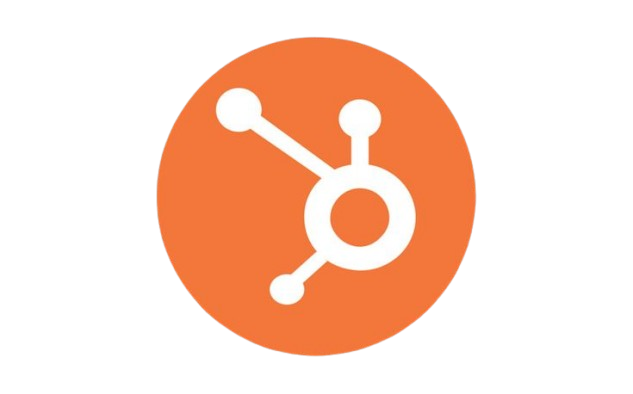What is a CMS ?
The content management system definition extends beyond simple website creation. Modern CMS platforms serve as comprehensive digital ecosystems that handle everything from content storage and organization to user permissions and automated workflows. You get powerful tools that would typically require a development team, packaged into intuitive interfaces that anyone can master.
Why are CMS platforms important ?
In today's digital landscape, a CMS overview reveals their critical role in web development. These systems have democratized website creation, allowing businesses, bloggers, and organizations to establish professional online presences without hiring developers. You can launch sophisticated websites, manage complex content structures, and scale your digital operations using drag-and-drop editors and pre-built templates.
What can you do with a CMS ?
The true power of CMS platforms lies in their accessibility. You don't need programming knowledge to :
- Create responsive, professional websites
- Manage multiple content types and media files
- Collaborate with team members on content creation
- Implement SEO best practices automatically
Choosing the right CMS for your specific needs determines your success. The platform you select should align with your technical comfort level, growth plans, and content management requirements.
1. Understanding the Core Components of a CMS
Every Content Management System operates through two fundamental CMS components that work together to deliver your digital content to the world. These components form the backbone of how you interact with your website and how your visitors experience it.
Content Management Application (CMA) : Your Creative Command Center
The Content Management Application serves as your primary workspace where all content creation and editing happens. Think of it as your digital dashboard - a user-friendly interface that transforms complex coding tasks into simple point-and-click operations.
When you log into WordPress, Drupal, or any other CMS, you're accessing the CMA. This component provides :
- Visual editors that work like familiar word processors
- Media libraries for organizing images, videos, and documents
- Template selection tools that control your site's appearance
- User management systems for controlling who can access what
- Plugin and extension managers for adding new functionality
The CMA eliminates the need to write HTML, CSS, or JavaScript code. You can format text, insert images, create pages, and manage your entire website through intuitive menus and buttons.
Content Delivery Application (CDA) : The Behind-the-Scenes Powerhouse
The Content Delivery Application handles the technical heavy lifting that visitors never see. This backend component stores your content in organized databases and delivers it to browsers when someone visits your website.
The CDA manages :
- Database storage of all your content, settings, and user data
- Server-side processing that generates web pages dynamically
- Security protocols that protect your website from threats
- Performance optimization including caching and load balancing
- Content publishing workflows that make your updates go live
The Seamless Partnership
These components communicate constantly to transform your creative input into live web experiences. When you publish a blog post through the CMA, the CDA immediately stores it and makes it available to your audience, creating a streamlined website management process that requires no technical expertise.
2. Types of CMS Installations
When selecting a CMS for your project, you'll come across two main installation methods that significantly influence how you manage your website. Knowing the differences between on-premises CMS and cloud-based CMS solutions will help you make a smart choice that fits your technical skills and business needs.
Self-Hosted Solutions: Complete Control at Your Fingertips
On-premises CMS platforms like WordPress.org, Drupal, and Joomla require you to download, install, and maintain the software on your own web server. These open-source solutions provide unprecedented flexibility and customization options. WordPress.org powers over 40% of all websites globally, while Drupal serves enterprise-level organizations requiring complex functionality. Joomla strikes a balance between user-friendliness and advanced features.
The self-hosted vs cloud CMS debate often centers on control versus convenience. Self-hosted solutions offer :
- Complete ownership of your data and code
- Unlimited customization through plugins, themes, and custom development
- Cost-effectiveness for high-traffic websites
- No vendor lock-in concerns
However, these benefits come with responsibilities. You handle server maintenance, security updates, backups, and technical troubleshooting. This approach demands technical expertise or budget for professional management.
Cloud-Based Platforms: Simplicity Meets Reliability
Cloud-based CMS platforms like Squarespace, Wix, and Adobe Experience Manager eliminate technical barriers by hosting everything for you. These software-as-a-service solutions handle infrastructure, security, and maintenance automatically.
Cloud hosting advantages include :
- Zero technical maintenance required
- Automatic updates and security patches
- Built-in backup systems and disaster recovery
- Scalable hosting that grows with your needs
- Professional support teams available
The trade-off involves reduced customization options and ongoing subscription costs. You rely on the provider's infrastructure and must work within their ecosystem limitations.
3. Key Features and Functionalities of a CMS that Matter in 2025
Modern CMS features 2025 demand goes beyond basic content creation. You need platforms that deliver sophisticated functionality while maintaining user-friendly interfaces. The most effective content management systems integrate multiple core capabilities that streamline your workflow and enhance your digital presence.
1. Indexing and Search Capabilities
Indexing and Search Capabilities form the backbone of efficient content retrieval. Your CMS should provide robust internal search functionality that allows you to locate specific content, images, or documents within seconds. Advanced platforms like Drupal and WordPress offer elasticsearch integration, enabling you to search across multiple content types, metadata, and even file contents.
2. Format Management
Format Management becomes critical when handling diverse document types. You'll encounter situations where your team needs to upload PDFs, videos, audio files, and various image formats. Leading CMS platforms support automatic format conversion and optimization, ensuring your content displays correctly across different devices and browsers.
3. Revision Control
Revision control systems track every change made to your content over time. This functionality proves invaluable when multiple team members collaborate on projects. You can view previous versions, compare changes, and restore earlier content if needed. WordPress's revision system and Drupal's advanced versioning capabilities exemplify this essential feature.
4. Customizable Templates and Workflow Automation
Customizable templates and workflow automation streamline your publishing process. You can create approval chains where content moves through designated reviewers before going live. Template systems allow you to maintain consistent branding while enabling quick content updates without design knowledge.
5. SEO-Friendly URLs and Metadata Management
SEO-friendly URLs and metadata management directly impact your search engine visibility. Your CMS should automatically generate clean, readable URLs and provide fields for meta descriptions, title tags, and schema markup. These features help search engines understand and rank your content effectively.
6. Permission Systems
Permission systems control user access through role-based management. You can assign specific capabilities to different team members - editors can create content while administrators manage system settings. This granular control protects your website while enabling collaborative content creation.
4. Exploring Different Types of Websites Built Using a CMS in 2025
The versatility of modern websites made with CMS 2025 continues to expand, accommodating diverse business needs and creative visions. Understanding the various CMS website types 2025 helps you identify which platform aligns best with your specific goals.
Static and Informational Websites
WordPress remains the go-to choice for creating professional static websites and corporate information hubs. You can build stunning company profiles, portfolio sites, and service-oriented websites using WordPress themes like Astra or GeneratePress. These sites typically feature :
- Clean, professional layouts with minimal maintenance requirements
- Contact forms and basic interaction elements
- Fast loading speeds optimized for search engines
- Easy content updates through the familiar WordPress dashboard
Joomla excels for organizations requiring more complex content structures, such as educational institutions or government agencies. Its robust user management system makes it ideal for sites with multiple content contributors and varying access levels.
Modern Blogging Platforms
The landscape of blogging platforms 2025 has evolved significantly. Ghost has gained tremendous traction among professional writers and content creators who prioritize speed and clean writing experiences. Its markdown-based editor and built-in SEO tools make it perfect for content-focused websites.
Blogger, while considered traditional, continues serving millions of casual bloggers who value Google's seamless integration and reliable hosting infrastructure.
Thriving eCommerce Solutions
eCommerce CMS 2025 platforms demonstrate remarkable growth and sophistication. WooCommerce on WordPress powers over 28% of all online stores, offering extensive customization options through thousands of plugins and themes. You can create everything from simple product catalogs to complex multi-vendor marketplaces.
Magento remains the preferred choice for enterprise-level eCommerce operations requiring advanced inventory management, multiple store views, and complex pricing structures. Major retailers continue choosing Magento for its scalability and robust feature set designed for high-volume transactions.
5. Leading CMS Platforms to Consider in 2025
WordPress continues to dominate the popular CMS platforms 2025 landscape, powering over 43% of all websites globally. This remarkable WordPress market share 2025 stems from its unmatched flexibility, extensive plugin ecosystem, and user-friendly interface that appeals to both beginners and developers. You'll find WordPress powering everything from personal blogs to enterprise websites, thanks to its ability to scale with your needs.
The platform's strength lies in its massive community of developers who contribute thousands of themes and plugins. You can transform a basic WordPress installation into virtually any type of website - whether you need an online store, portfolio, or corporate site. The Gutenberg block editor has revolutionized content creation, making it easier than ever to build visually appealing pages without touching code.
Joomla remains a powerful alternative for users seeking more built-in functionality out of the box. You'll appreciate its robust user management system and multilingual capabilities, making it ideal for complex websites requiring sophisticated access controls. Joomla strikes a balance between WordPress's simplicity and Drupal's complexity, offering advanced features while maintaining reasonable usability.
Drupal stands as the go-to choice for enterprise-level projects requiring maximum customization and security. You'll find it powering government websites, universities, and large corporations that need granular control over every aspect of their digital presence. Its modular architecture allows developers to create highly customized solutions, though it requires more technical expertise to master.
Each platform offers distinct advantages :
- WordPress : Easiest learning curve, largest ecosystem, best for most users
- Joomla : Built-in advanced features, strong user management, good for complex sites
- Drupal : Maximum flexibility, enterprise-grade security, ideal for custom applications
Your choice depends on your technical skills, project requirements, and long-term scalability needs.
6. Step-by-Step Process to Build a Website Using a CMS Like WordPress in 2025
Building a website with a CMS in 2025 remains straightforward when you follow the right approach. The process begins with foundational decisions that will impact your site's performance and scalability.
Choosing Your Domain Name and Hosting Provider
Your domain name serves as your website's digital address, making it crucial to select something memorable and relevant to your brand. When setting up WordPress site infrastructure, consider these factors :
- Domain availability - Use tools like Namecheap or GoDaddy to check availability
- Brand alignment - Ensure the name reflects your business or personal brand
- Extension selection - .com remains the gold standard, though industry-specific extensions like .tech or .store gain popularity
Reputable hosting providers in 2025 offer specialized WordPress hosting with enhanced security and performance features. SiteGround continues to excel with their managed WordPress hosting, providing automatic updates, daily backups, and built-in caching. Bluehost remains a WordPress.org recommended host, offering one-click WordPress installation and 24/7 support.
Installation Methods for Your CMS
You have two primary paths when learning how to build website with CMS 2025:
Self-Hosted Installation :
- Purchase hosting and domain separately
- Access your hosting control panel (cPanel or similar)
- Use one-click WordPress installer
- Complete the famous 5-minute WordPress installation
Managed WordPress Hosting :
- Sign up with providers like WP Engine or Kinsta
- WordPress comes pre-installed and optimized
- Access your admin dashboard immediately
- Begin customizing your site
The managed approach costs more but eliminates technical setup requirements. Self-hosted solutions provide greater control and customization options while requiring basic technical knowledge.
Understanding What is a CMS becomes clearer through hands-on experience. WordPress's user-friendly dashboard allows you to add content, install themes, and manage plugins without touching code.
7. Specialized Forms of Content Management Systems You Should Know About in 2025
The CMS landscape has evolved beyond traditional website builders to encompass specialized systems designed for specific content needs. Digital Asset Management Systems represent one of the most significant developments in content management technology, addressing the growing complexity of modern digital workflows.
Digital Asset Management Systems: The New Standard
A digital asset management system 2025 serves as a centralized hub for organizing, storing, and distributing multimedia content across organizations. These platforms excel at handling large volumes of images, videos, documents, audio files, and brand assets that traditional CMSs struggle to manage efficiently.
Companies like Adobe Experience Manager Assets, Bynder, and Widen Collective have transformed how businesses approach content organization. You can tag assets with metadata, create approval workflows, and maintain version control across thousands of files simultaneously.
Key Features That Set DAM Apart
- Advanced search capabilities using AI-powered image recognition and metadata filtering
- Brand consistency tools that ensure logo usage, color schemes, and typography remain uniform
- Rights management systems tracking usage permissions and licensing agreements
- Integration capabilities connecting with marketing automation platforms, social media schedulers, and e-commerce systems
Enterprise Content Management Expansion
Beyond DAM systems, Enterprise Content Management (ECM) platforms like SharePoint, Alfresco, and Box have gained traction among large organizations. These systems focus on document lifecycle management, compliance tracking, and collaborative workflows rather than public-facing website content.
Headless CMS Revolution
Headless CMS platforms such as Contentful, Strapi, and Sanity separate content creation from presentation layers. This architecture allows you to publish the same content across websites, mobile apps, IoT devices, and digital signage without duplicating efforts.
The API-first approach of headless systems enables developers to build custom front-end experiences while content creators work within familiar editing interfaces.
8. Benefits and Challenges When Choosing the Right One for Your Needs in 2025
Choosing right CMS 2025 requires a strategic approach that balances your technical capabilities with your business objectives. You need to assess whether your team has the expertise to manage complex installations or if you require a more user-friendly solution that handles technical aspects automatically.
Technical Requirements Assessment
Your technical infrastructure plays a decisive role in CMS selection. Self-hosted platforms like WordPress.org demand server management skills, regular updates, and security monitoring. You'll need to consider :
- Server specifications - RAM, storage, and bandwidth requirements
- Database management capabilities for content storage
- Security protocols and backup systems
- Scalability potential for future growth
Ease-of-Use Considerations
User-friendly platforms prioritize simplicity over customization flexibility. Cloud-based solutions like Squarespace or Wix handle technical maintenance while providing intuitive interfaces. These platforms excel when you need:
- Drag-and-drop content editing
- Automatic updates and security patches
- Built-in hosting and domain management
- Responsive design templates
Cost-Benefit Analysis
Budget constraints significantly impact your CMS choice. Open-source platforms appear free but require investments in hosting, themes, plugins, and maintenance. Premium hosted solutions include these costs upfront but may limit customization options.
Performance and Flexibility Trade-offs
High-performance CMSs often demand technical expertise to optimize properly. You face decisions between platforms offering extensive customization capabilities versus those providing streamlined, limited-but-reliable functionality. Drupal delivers enterprise-level flexibility but requires developer knowledge, while platforms like Ghost focus specifically on blogging with minimal complexity.
Long-term Maintenance Commitment
Your chosen CMS determines ongoing responsibilities. Self-managed systems require continuous attention to security updates, plugin compatibility, and performance optimization. Managed solutions reduce these burdens but may restrict your ability to implement specific features or integrations your business requires.
9. The Future Outlook for Content Management Systems Beyond 2025: What Lies Ahead?
The future trends in CMS beyond 2025 point toward a fundamental shift in how content management systems operate and deliver experiences. Understanding what is a CMS in this evolving landscape requires recognizing that traditional monolithic architectures are giving way to more flexible, API-driven solutions.
Headless and decoupled architectures represent the most significant transformation coming to content management. These systems separate the content management backend from the presentation layer, allowing you to deliver content across multiple channels simultaneously. You can manage content once and distribute it to websites, mobile apps, IoT devices, and digital signage without rebuilding your entire system.
Key Technological Shifts Reshaping CMS Platforms
- API-first development enabling seamless integrations with third-party services
- Artificial intelligence integration for automated content optimization and personalization
- Voice and conversational interfaces changing how users interact with content management
- Progressive Web App (PWA) capabilities built directly into CMS platforms
- Enhanced security protocols addressing growing cybersecurity concerns
Omnichannel delivery becomes the standard expectation rather than an advanced feature. You'll see CMS platforms that automatically optimize content for different devices, screen sizes, and consumption contexts without manual intervention. This approach allows businesses to maintain consistent brand messaging while adapting to platform-specific requirements.
Edge computing integration will bring content closer to users, reducing load times and improving user experiences globally. CMS platforms are already beginning to leverage content delivery networks (CDNs) more intelligently, predicting user behavior and pre-loading relevant content.
The rise of collaborative content creation tools powered by machine learning will streamline workflows for teams. You'll work with systems that suggest content improvements, automate SEO optimization, and provide real-time analytics to guide content strategy decisions. These intelligent features transform content management from a manual process into a data-driven operation that adapts to user preferences and market trends.
Conclusion
Understanding what is a CMS becomes essential as digital landscapes continue evolving. The importance of CMS extends beyond simple content management—these platforms serve as the foundation for your digital presence, enabling you to adapt quickly to changing market demands.
You now have the knowledge to make informed decisions about your content management needs. Whether you're launching a personal blog, building an enterprise website, or managing complex digital assets, the right CMS can transform your approach to content creation and delivery.
Key considerations for your CMS selection :
- Current requirements versus future growth potential
- Technical expertise available within your team
- Budget constraints and total cost of ownership
- Integration needs with existing systems
- Scalability requirements for long-term success
The CMS landscape will continue advancing with AI integration, improved user experiences, and enhanced security features. Your chosen platform should accommodate these innovations while meeting your immediate objectives.
Take time to evaluate different options through free trials and demos. The perfect CMS for your needs exists—you just need to find it.
Related products
Orbitly :

Hubspot :

Klaviyo :

FAQs (Frequently Asked Questions)
What is a Content Management System (CMS) and why is it important in modern web development ?
A Content Management System (CMS) is a software application that allows users to create, manage, and modify digital content on a website without needing coding skills. It plays a crucial role in modern web development by empowering users to build websites quickly and easily, streamlining content management processes.
What are the core components of a CMS and how do they work together ?
The core components of a CMS include the Content Management Application (CMA), which serves as the user interface for creating and editing content, and the Content Delivery Application (CDA), which functions as the backend that stores and publishes content. Together, these components simplify website management by separating content creation from content delivery.
What are the main types of CMS installations available in 2025 ?
In 2025, CMS installations primarily fall into two categories: on-premises (self-hosted) CMS like WordPress.org, Drupal, and Joomla, which offer more control but require maintenance; and cloud-based CMS platforms such as Squarespace, Wix, and Adobe Experience Manager, which provide ease of use and reduced maintenance through cloud hosting.
Which key features should I look for in a CMS in 2025 ?
Important CMS features in 2025 include revision control to track content changes, SEO-friendly URLs for better search engine ranking, customizable templates for design flexibility, indexing and search capabilities for efficient content retrieval, publishing tools with workflow automation, SEO optimization features like metadata management, and permission systems to control user roles and access.
What types of websites can be built using a CMS in 2025 ?
CMS platforms in 2025 support building various types of websites including static informational sites using WordPress or Joomla, blogging platforms powered by Blogger or Ghost, and eCommerce stores utilizing Magento or WooCommerce on WordPress. These diverse applications demonstrate the versatility of CMS solutions.
How do I build a website using WordPress CMS in 2025 ?
To build a website with WordPress in 2025, start by selecting a domain name and purchasing hosting services from reputable providers like SiteGround or Bluehost. Then install WordPress on your server or register through a cloud provider. From there, you can customize your site using themes and plugins to suit your specific needs.











